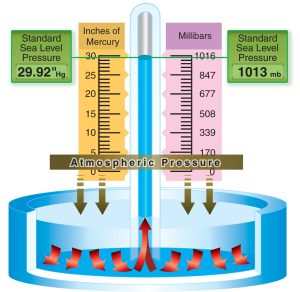For today’s post, we have adapted information from the Pilot’s Handbook of Aeronautical Knowledge to introduce the subject of aircraft performance. Matters of aircraft performance will always be subject to the guidelines of your specific aircraft outlined in the performance or operational information section of the Aircraft Flight Manual/Pilot’s Operating Handbook (AFM/POH). The use of this data in flying operations is mandatory for safe and efficient operation.
It must be emphasized that the manufacturers’ information and data furnished in the AFM/POH is not standardized. The performance data may be presented on the basis of standard atmospheric conditions, pressure altitude, or density altitude. The performance information in the AFM/POH has little or no value unless the user recognizes those variations and makes the necessary adjustments.
Performance
Performance is a term used to describe the ability of an aircraft to accomplish certain things that make it useful for certain purposes. For example, the ability of an aircraft to land and take off in a very short distance is an important factor for a pilot who operates in and out of short, unimproved airfields. The ability to carry heavy loads, fly at high altitudes a fast speeds, or travel long distances is essential performance for operators of airline and executive type aircraft.
The primary factors most affected by performance are takeoff and landing distance, rate of climb, ceiling, payload, range, speed, maneuverability, stability, and fuel economy. Some of these factors are often directly opposed: for example, high speed versus short landing distance, long range versus great payload, and high rate of climb versus fuel economy. It is the preeminence of one or more of these factors that dictates differences between aircraft and explains the high degree of specialization found in modern aircraft.
Since the characteristics of the atmosphere have a major effect on performance, it is necessary to review two dominant factors—pressure and temperature.
Atmospheric Pressure
Though there are various kinds of pressure, pilots are mainly concerned with atmospheric pressure. It is one of the basic factors in weather changes, helps to lift the aircraft, and actuates some of the most important flight instruments in the aircraft.
Though air is very light, it has mass and is affected by the attraction of gravity. Therefore, like any other substance, it has weight; because it has weight, it has force. Since it is a fluid substance, this force is exerted equally in all directions, and its effect on bodies within the air is called pressure. Under standard conditions at sea level, the average pressure exerted by the weight of the atmosphere is approximately 14.7 pounds per square inch (psi). The density of air has significant effects on the aircraft’s performance. As air becomes less dense, it reduces:
- Power, because the engine takes in less air.
- Thrust, because the propeller is less efficient in thin air.
- Lift, because the thin air exerts less force on the airfoils.
The pressure of the atmosphere varies with time and altitude. Due to the changing atmospheric pressure, a standard reference was developed. The standard atmosphere at sea level is a surface temperature of 59 degrees Fahrenheit (°F) or 15 degrees Celsius (°C) and a surface pressure of 29.92 inches of mercury (“Hg) or 1013.2 millibars (mb).
Pressure Altitude
Pressure altitude is the height above the standard datum plane (SDP). The aircraft altimeter is essentially a sensitive barometer calibrated to indicate altitude in the standard atmosphere. If the altimeter is set for 29.92 “Hg SDP, the altitude indicated is the pressure altitude—the altitude in the standard atmosphere corresponding to the sensed pressure.
The SDP is a theoretical level where the pressure of the atmosphere is 29.92 “Hg and the weight of air is 14.7 psi. As atmospheric pressure changes, the SDP may be below, at, or above sea level. Pressure altitude is important as a basis for determining aircraft performance, as well as for assigning flight levels to aircraft operating at above 18,000 feet.
The pressure altitude can be determined by either of two methods:
- By setting the barometric scale of the altimeter to 29.92 “Hg and reading the indicated altitude, or
- By applying a correction factor to the indicated altitude according to the reported “altimeter setting.”
Density Altitude
The more appropriate term for correlating aerodynamic performance in the nonstandard atmosphere is density altitude—the altitude in the standard atmosphere corresponding to a particular value of air density.
Density altitude is pressure altitude corrected for nonstandard temperature. As the density of the air increases (lower density altitude), aircraft performance increases. Conversely, as air density decreases (higher density altitude), aircraft performance decreases. A decrease in air density means a high density altitude; an increase in air density means a lower density altitude. Density altitude is used in calculating aircraft performance. Under standard atmospheric condition, air at each level in the atmosphere has a specific density; under standard conditions, pressure altitude and density altitude identify the same level. Density altitude, then, is the vertical distance above sea level in the standard atmosphere at which a given density is to be found.
The computation of density altitude must involve consideration of pressure (pressure altitude) and temperature. Since aircraft performance data at any level is based upon air density under standard day conditions, such performance data apply to air density levels that may not be identical to altimeter indications. Under conditions higher or lower than standard, these levels cannot be determined directly from the altimeter.






